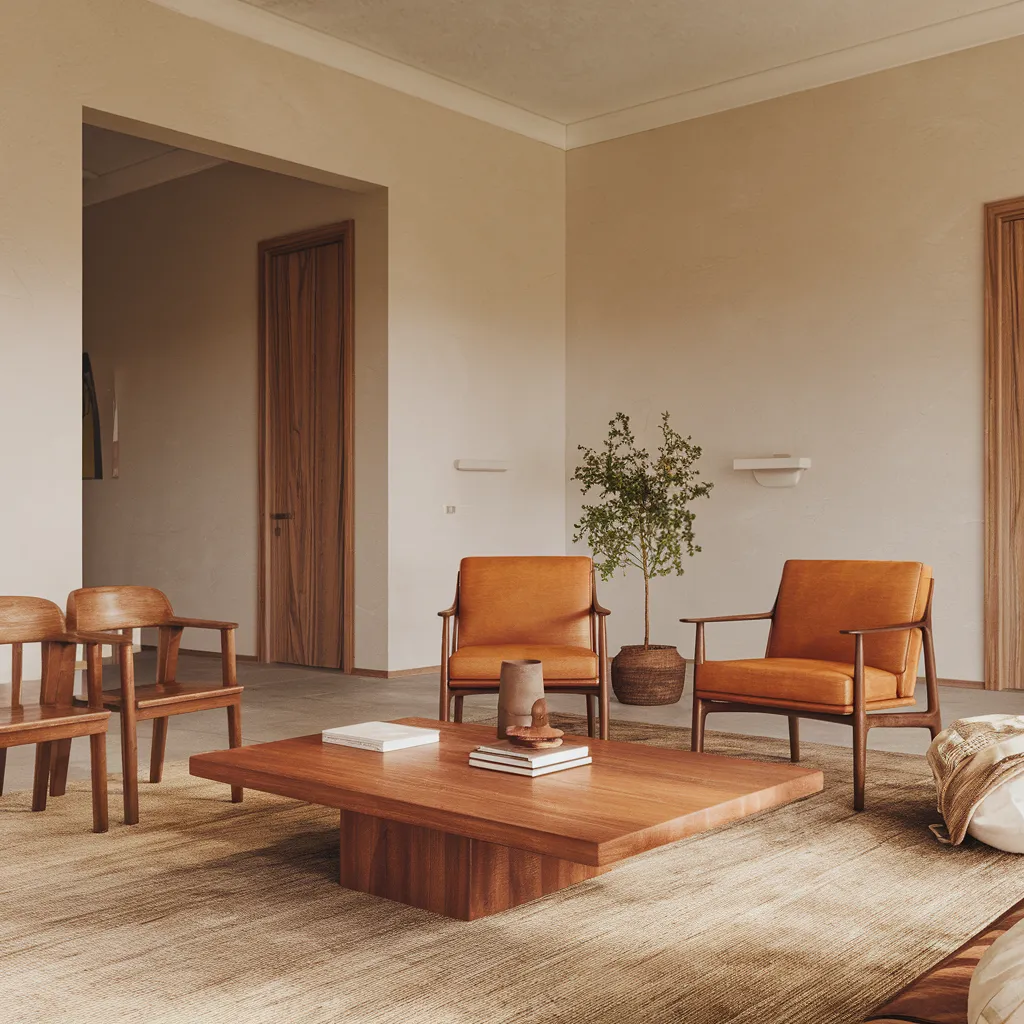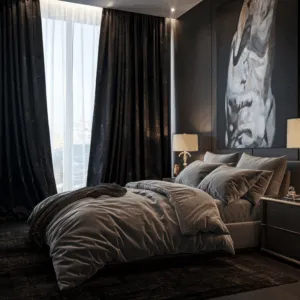In a world that often feels chaotic and overwhelming, the concept of warm minimalism offers a sanctuary of tranquility and intentional living. This sophisticated interior design style strikes a harmonious balance between the principles of minimalism and the cozy embrace of warmth, creating a space that invites both simplicity and comfort.
Embrace Simplicity, Invite Warmth: The Art of Warm Minimalism
Warm minimalism is a thoughtful approach to interior design that celebrates the beauty of simplicity while infusing it with a sense of warmth and welcoming energy. By embracing the core tenets of minimalism, such as clean lines, functional furniture, and a focus on essential elements, this style creates a serene and clutter-free environment. However, it goes beyond the stark austerity often associated with traditional minimalism by incorporating natural materials, earthy tones, and textural elements that add depth and coziness to the space.
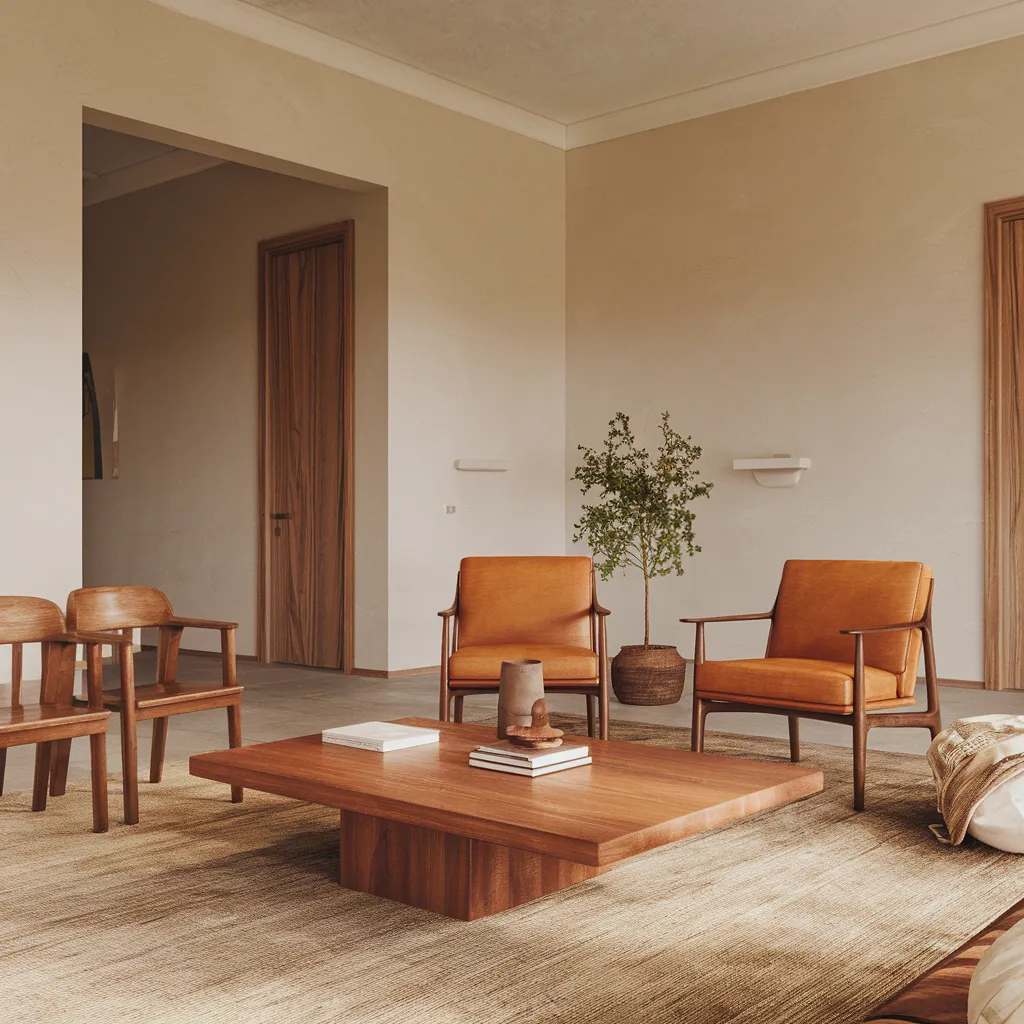
An elegant minimalist seating area, featuring refined wooden furniture and warm leather accents, creates a serene ambiance. Soft, neutral walls and carefully placed greenery complement the natural materials, expressing a sophisticated and inviting interpretation of warm minimalism.
Curating Comfort: Textures that Soothe
One of the hallmarks of warm minimalism is the intentional use of textures to create a sense of comfort and visual interest. Natural materials like wood, stone, linen, and wool are seamlessly integrated into the design, adding warmth and tactile appeal. These elements not only provide a connection to nature but also introduce a layer of depth and richness to the minimalist aesthetic. Imagine running your fingers over the smooth surface of a wooden coffee table or sinking into a plush, wool-upholstered chair – these sensory experiences invite relaxation and a sense of grounding.
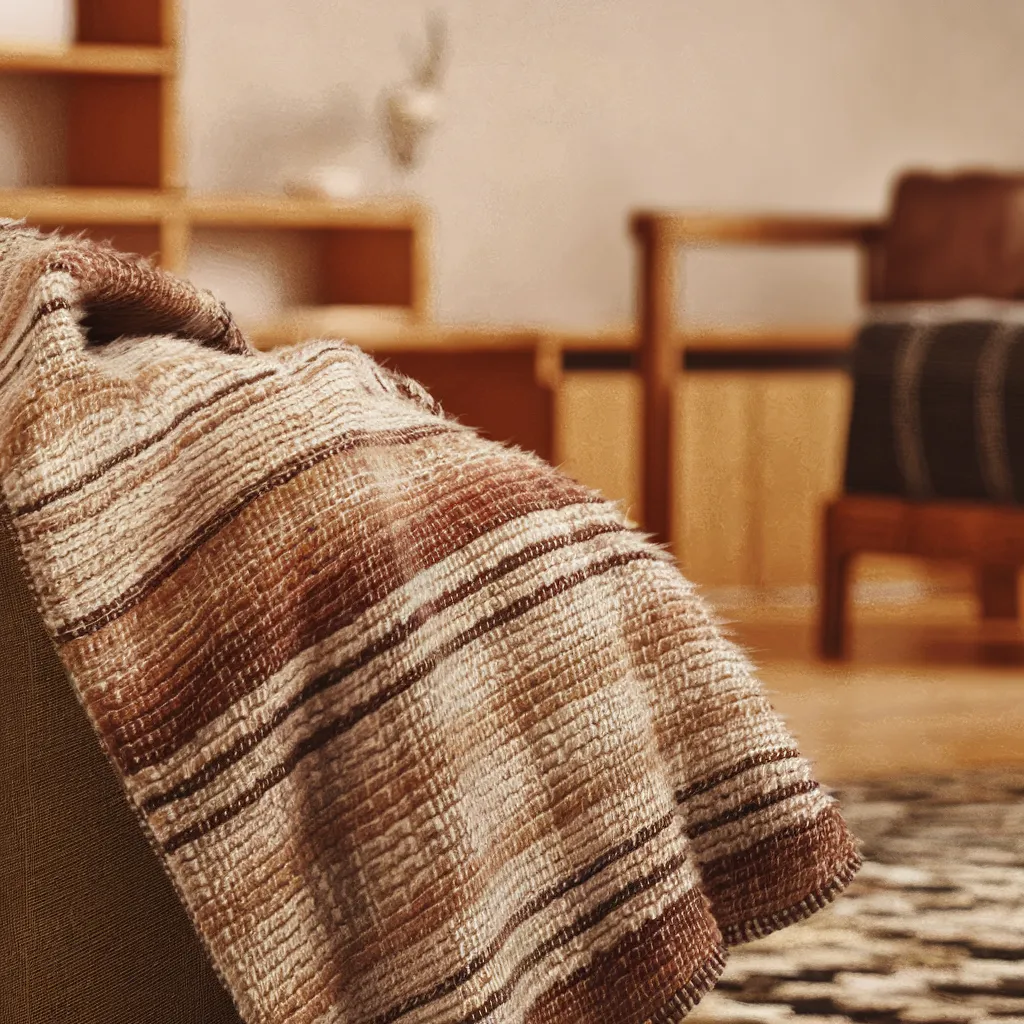
A close-up of a cozy, earth-toned woven blanket draped casually highlights the inviting textures and warmth central to minimalism. Rich browns and gentle creams reinforce the serene yet inviting feel, perfectly capturing minimalist comfort.
The Allure of Negative Space: Breathing Room for Tranquility
While warm minimalism embraces the concept of ‘less is more,’ it does so in a way that creates a sense of spaciousness and tranquility. By leaving ample negative space between furniture pieces and decor elements, the design allows for a visual and physical breathing room that promotes a sense of calm. This intentional use of space not only prevents a cluttered feel but also encourages a mindful appreciation of the present moment. As you move through the room, you’ll find yourself drawn to the simplicity and serenity that negative space provides, inviting you to slow down and savor the beauty of the present.

An airy, minimalist living room characterized by graceful arches, smooth lines, and a muted color scheme offers a harmonious balance of comfort and simplicity. Soft, rounded furnishings in earthy neutrals accentuate the space’s tranquil charm, exemplifying the art of serene minimalism.
Illuminating Serenity: Lighting the Minimalist Sanctuary
Lighting plays a crucial role in creating the warm and inviting ambiance that defines warm minimalism. Rather than relying on harsh overhead lighting, this style favors the use of soft, ambient illumination that casts a warm, diffused glow throughout the space. Table lamps with frosted glass or linen shades, sconces with warm-toned bulbs, and brass pendant lights are all excellent choices for achieving this cozy, welcoming atmosphere. The gentle interplay of light and shadow not only enhances the minimalist aesthetic but also creates a sense of intimacy and relaxation.
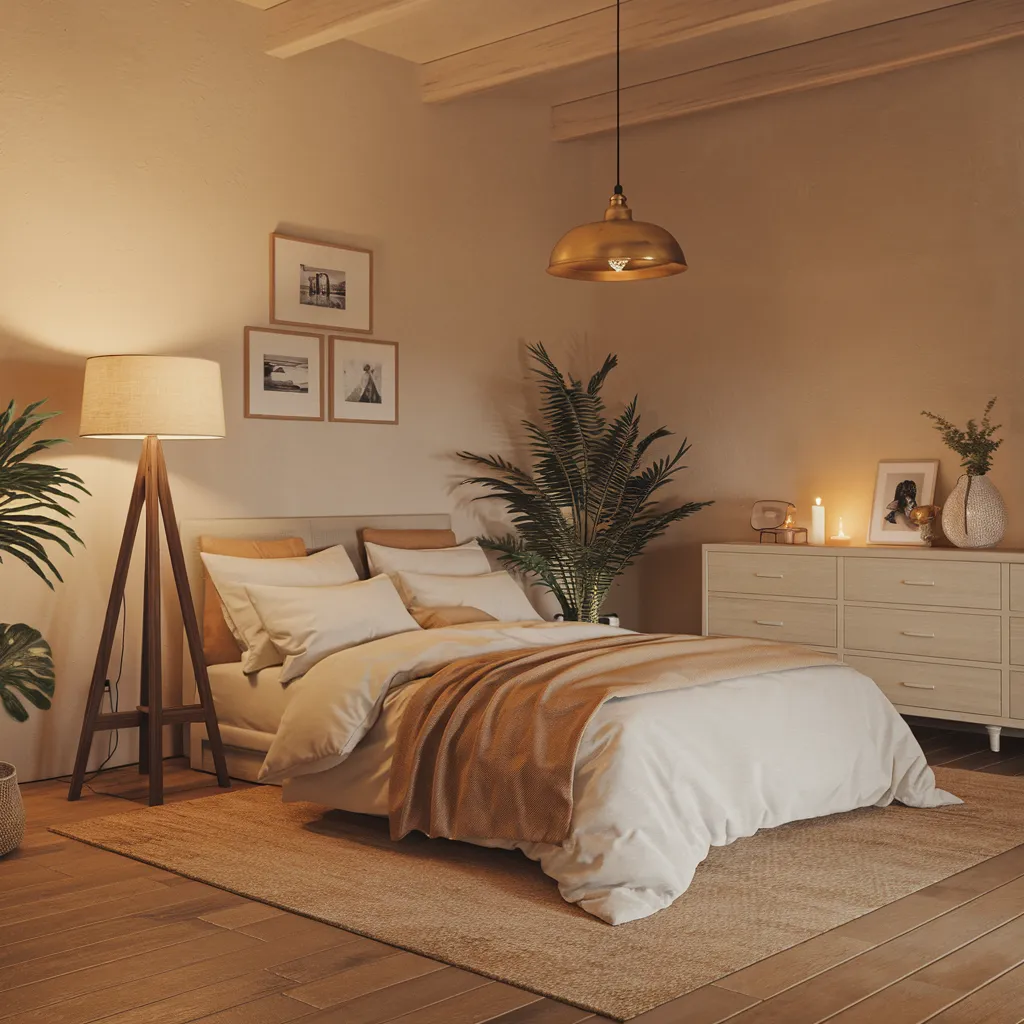
This inviting bedroom radiates warmth and tranquility, highlighted by soft lighting, earthy tones, and lush plants. Simple decor elements, such as a woven rug and streamlined furniture, enhance the peaceful atmosphere, capturing the calming essence of warm minimalism.
Nature’s Embrace: Bringing the Outdoors In
Warm minimalism recognizes the restorative power of nature and seeks to incorporate it into the design in subtle yet impactful ways. By introducing indoor plants like snake plants, succulents, or fiddle-leaf figs in simple, neutral pots, the space is infused with a sense of life and freshness. The presence of these natural elements not only adds visual interest but also contributes to a healthier and more grounding environment. Additionally, incorporating natural materials like wood, stone, and rattan into the design further strengthens the connection to the outdoors, creating a harmonious blend of indoor and outdoor living.
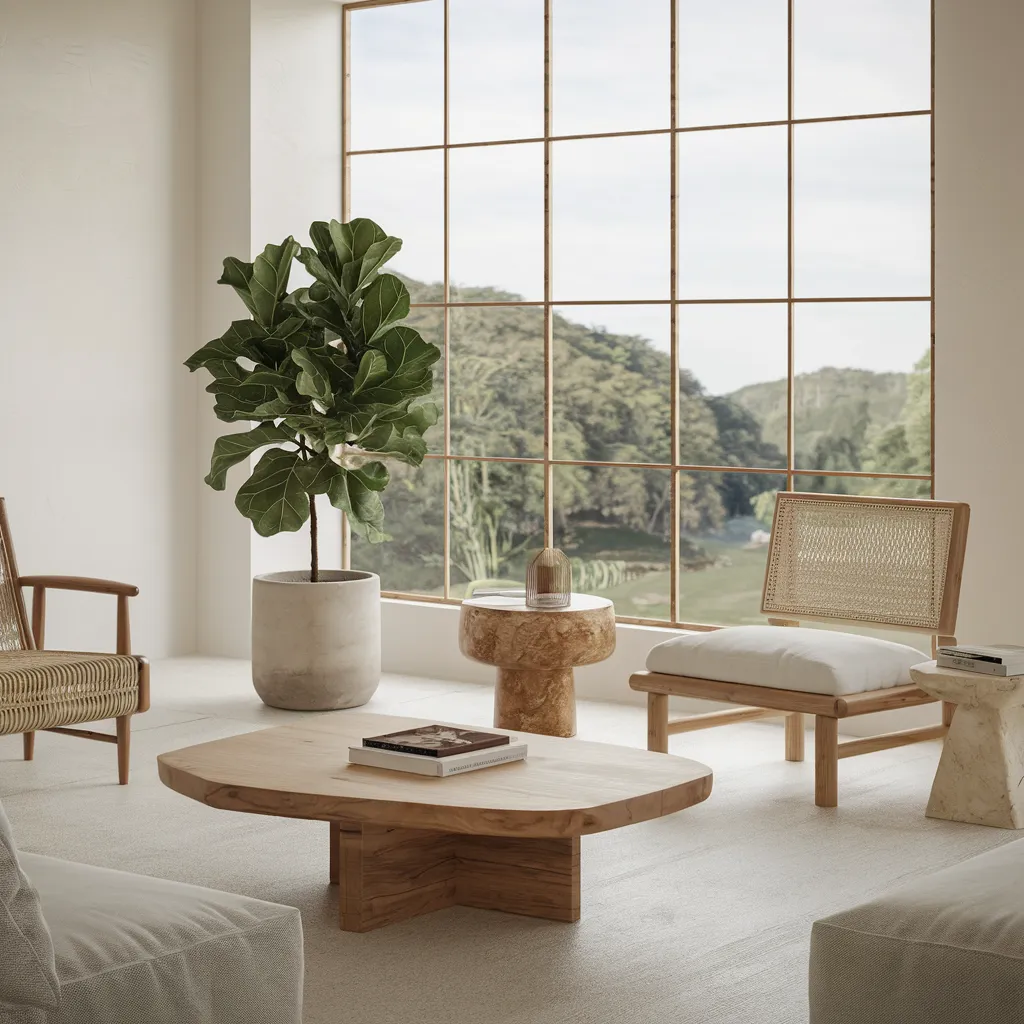
A serene, minimalist living space features a neutral palette of warm cream tones, natural wood, and subtle greenery. Expansive windows flood the room with natural light, emphasizing the elegant simplicity of the decor, creating a soothing environment that embodies warm minimalism.

